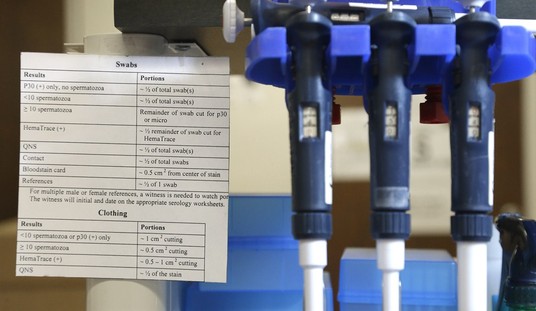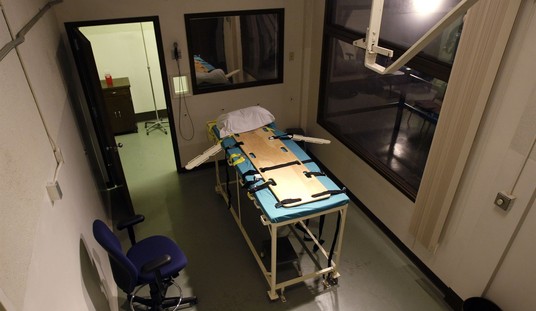The immigration court system is close to broken. The New York Times reported that there was a backlog of some 525,000 cases:
The judge in Courtroom 2 had unsettling news for Edhite Pouken Shienji, a woman from Cameroon seeking asylum. After 14 years of delays, she was finally scheduled for a hearing. But at the last minute, the judge was reassigned to handle the cases of some migrants from Central America. Her hearing was postponed once again — to 2019.
In Courtroom 8, there was a deportation hearing for Damián Martínez, from Mexico. The judge soon discovered he was a 4-month-old infant, dozing on the shoulder of his mother. Somehow the baby’s case had become separated in court records from hers. The bewildered mother, in court without a lawyer, had no clue how to fix the problem.
The judge could only urge her to make sure that Damián “presents himself in all of his future hearings.”
Weighed down by a backlog of more than 520,000 cases, the United States immigration courts are foundering, increasingly failing to deliver timely, fair decisions to people fighting deportation or asking for refuge, according to interviews with lawyers, judges and government officials. With too few judges, overworked clerks and an antiquated docket based on stacks of paper files, many of the 56 courts nationwide have become crippled by delays and bureaucratic breakdowns.
By delaying these hearings, no one is well-served. The immigrant loses years of their life in limbo and immigration law is made to look like an ass to citizens and non-citizens alike. This, in turn, encourages more illegal immigration and more hostility towards immigrants of all stripes.
This is self-inflicted. Since 1996 the only illegals entitled to an immigration court appearance are those that have been in the country for two years. Unfortunately, administration after administration has decided to turn a blind eye to the problem and opened the immigration court system to basically all comers. George W. Bush was excoriated when, back in 2004, he ordered that illegals found with 100 miles of the border and who had been in the U.S. for less than fourteen days (why 100 and not 110? why 14 and not 7?) be subject to expedited removal.
The Washington Post is reporting that is changing:
Under the proposal, the agency would be empowered to seek the expedited removal of illegal immigrants apprehended anywhere in the United States who cannot prove they have lived in the country continuously for more than 90 days, according to a 13-page internal agency memo obtained by The Washington Post.
The new guidelines, if enacted, would represent a major expansion of the agency’s authority to speed up deportations under President Trump, who has made border security a top priority.
Under the stewardship of Homeland Security Secretary John Kelly, the Trump administration has been slowly and steadily tightening the screws on the supply side of the illegal immigration equation. Illegal immigration was down by 53% in June. And even the Post admits that enforcement now is much tougher than in the past.
In a pair of immigration executive orders signed in January, Trump sought to expand the use of expedited deportations, as one of several strategies to crack down on illegal immigration. Trump also has called for an additional 10,000 immigration agents and 5,000 border agents, penalties for sanctuary jurisdictions that refuse to cooperate with immigration agents, a “big, beautiful” wall along the U.S.-Mexico border and dozens of new immigration judges to slash the immigration court’s backlog of roughly 600,000 cases.
Trump has also lifted the Obama-era restrictions that shielded millions of undocumented immigrants from deportation if they had no criminal histories or were the parents of American-citizen children. Now, immigration agents are free to arrest anyone who is in the United States illegally.
In May, U.S. Immigration and Customs Enforcement said it was arresting more than 400 immigrants a day. In the president’s first three months in office, ICE arrested 41,318 immigrants, up 37.6 percent over the same period last year. Most had criminal records, but the largest increase was among immigrants with no records at all.
At the same time, the administration has allowed DAPA to lapse, has said it will not defend DACA from legal challenge and has announced it will start treating people encouraging or guiding unaccompanied minors into the United States as human smugglers.
By expanding the window of eligibility for expedited deportation, the backlog of immigration cases will begin to decline. As the rate of illegal immigration further declines, so too will the number of cases reaching the immigration court. On the whole, this shows a measured and strategic response to the illegal immigration issue. The real test will come when the supply side of the equation reaches the point of diminishing returns and they have to address the demand side.














Join the conversation as a VIP Member